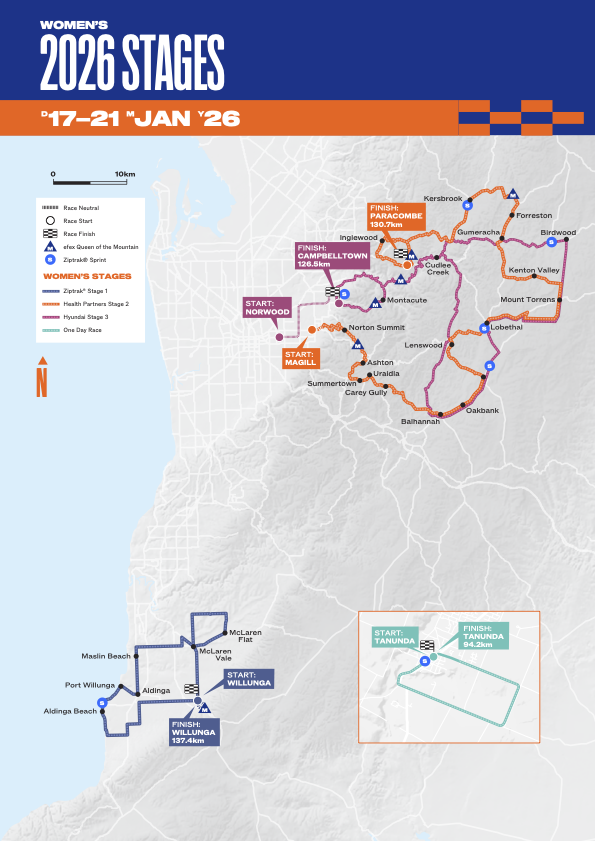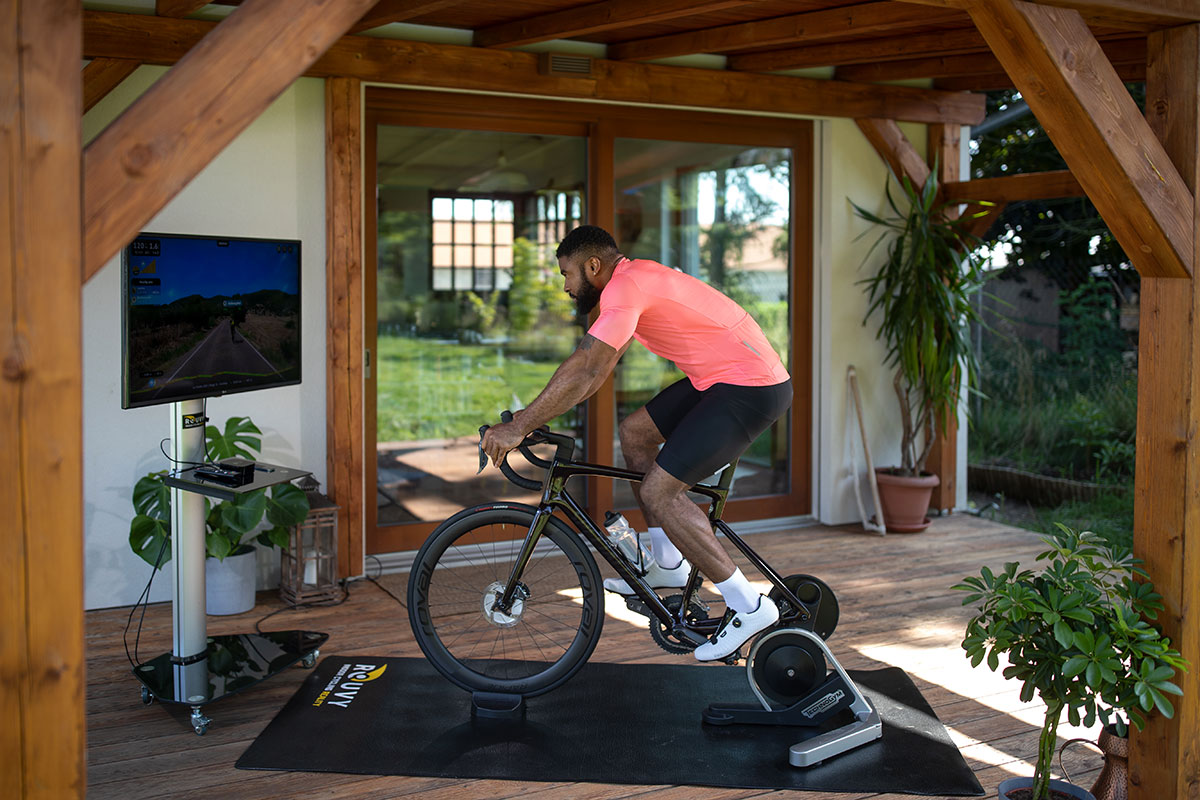

To turbo or not to turbo.
So often this is the decision we are met with in the northern hemisphere as the nights draw in and the rain starts to fall. In the past, it was relatively simple - ride outside when you can and suffer in the garage when it's really rough outside.
However, with modern technology, this is an outdated take. Indoor and outdoor training are different tools, but both of them have their strengths, especially in the winter.
So when should you stay indoors, and when should you brave the elements?
Indoor riding for safety
The first and most obvious benefit of indoor training, especially in the darker months of the year, is safety. For many of us in the northern hemisphere, the combination of full-time employment mixed with far fewer daylight hours means that midweek rides outdoors will often be spent in the darkness.
With the right bike lights and sensible route choices, this isn't necessarily 'unsafe,' per se, but riding indoors in the dark is most definitely more safe.
Indoors, the only real risks you face are excess perspiration and maybe some loss of pride if you lose the local Zwift race - traffic is taken completely out of the equation.
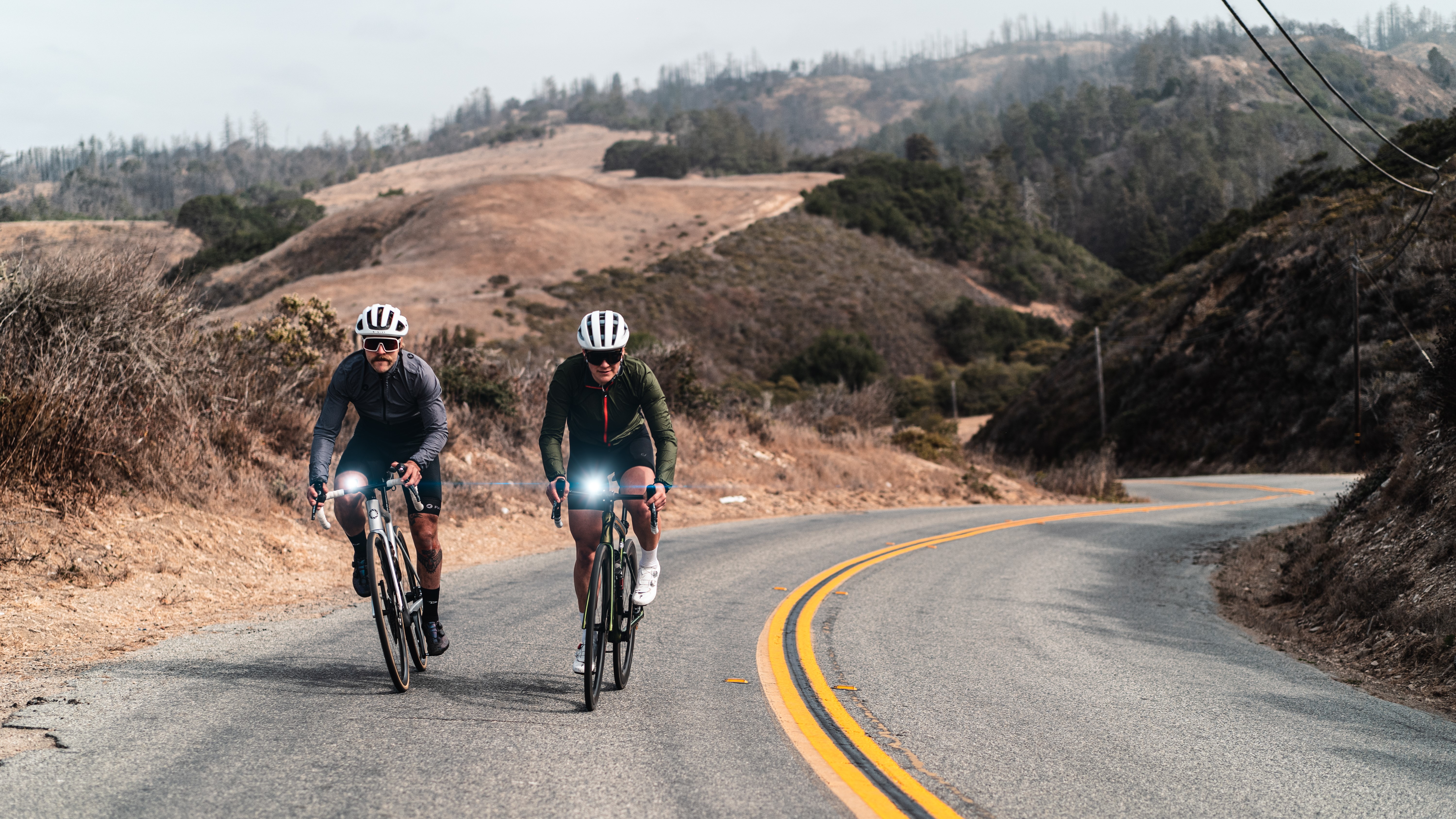
It's not just the other road users either. Poor weather, mixed with commuter traffic can cause roads to become far slicker. Here in the UK, the potholes tend to be far worse too, which does increase the risk of being out on the road.
The latest race content, interviews, features, reviews and expert buying guides, direct to your inbox!
At the weekends, or while riding in the light, the gap most definitely narrows. I personally find that if it's not too nasty outside, the preference remains riding outside for reasons I'll come on to. But one thing is for sure, in 2025, riding indoors doesn't have to be the boring chore it once was.
Enjoyment and motivation
Even with all the wondrous virtual roads on offer from the likes of Zwift, Rouvy and MyWhoosh, riding indoors still is - and probably never will be - as good as a sunny spin with your mates, and that's worth remembering, particularly when it comes to training.
You tend to repeat what you enjoy, and consistency matters more than perfection. Sure, the turbo is perfect for those days where you just want to hop on, complete an interval session, and hop off again, but if the weather is nice and you just want to clear the head, you'll struggle to beat a nice local route combined with some good old-fashioned fresh air.
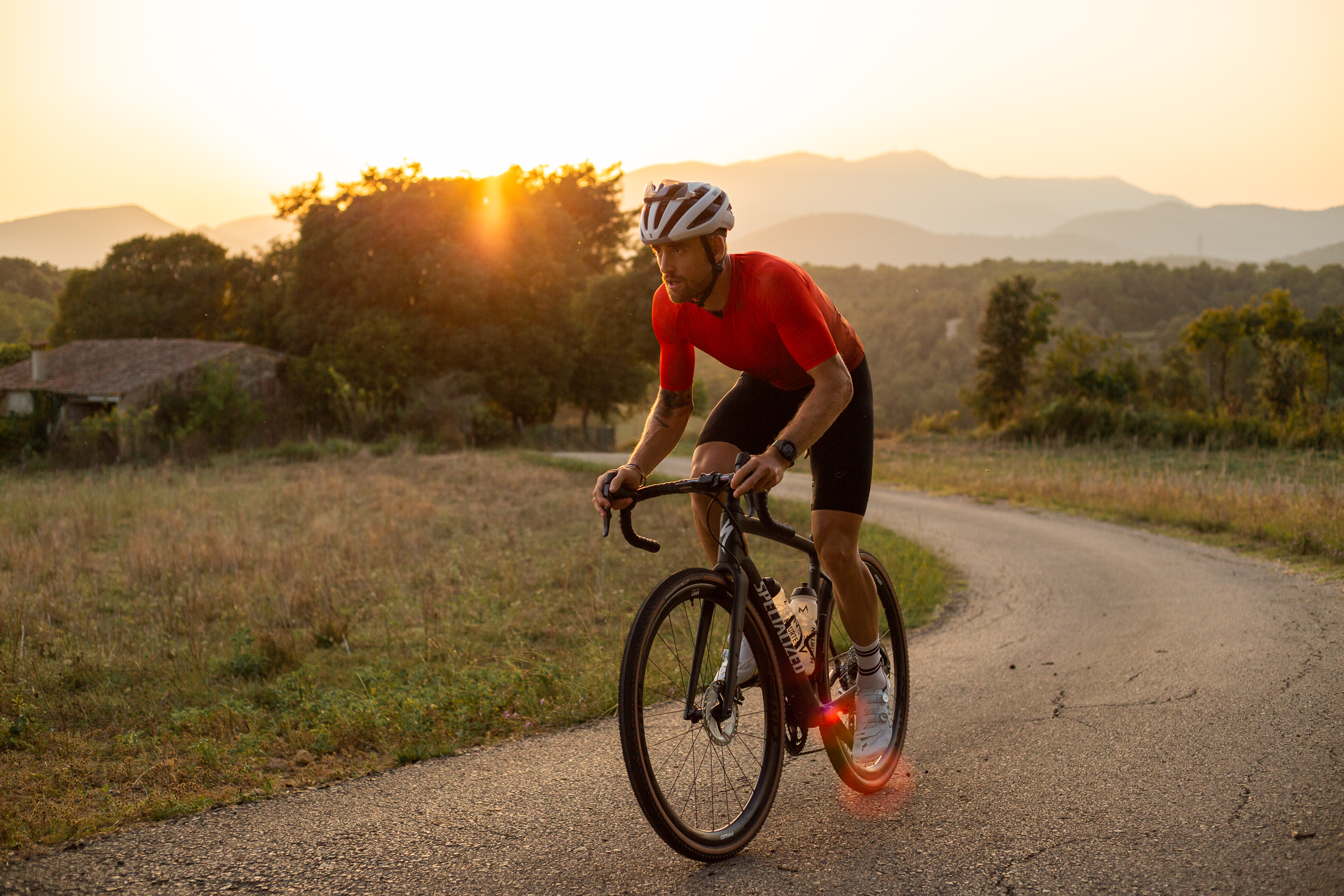
And it's the mindfulness which I think is the most important thing here. Most of us started riding in the first place for enjoyment, and for those times where you want to be distracted by the roads and switch off from work, the turbo still plays second fiddle to the real world.
That's not to say indoor training can't be fun though - that would be outdated. Social rides, online races, and new routes all help to keep indoor riding enjoyable, if you make the most of the tech that's on offer.
Training effectively
If you are focused on your training, this is where you need to be careful not to overuse either tool through the winter.
Outdoor and indoor riding both have their strengths when it comes to training, and a healthy combination of both - if you have the time - tends to be the best option for keeping your head and legs fresh when training.
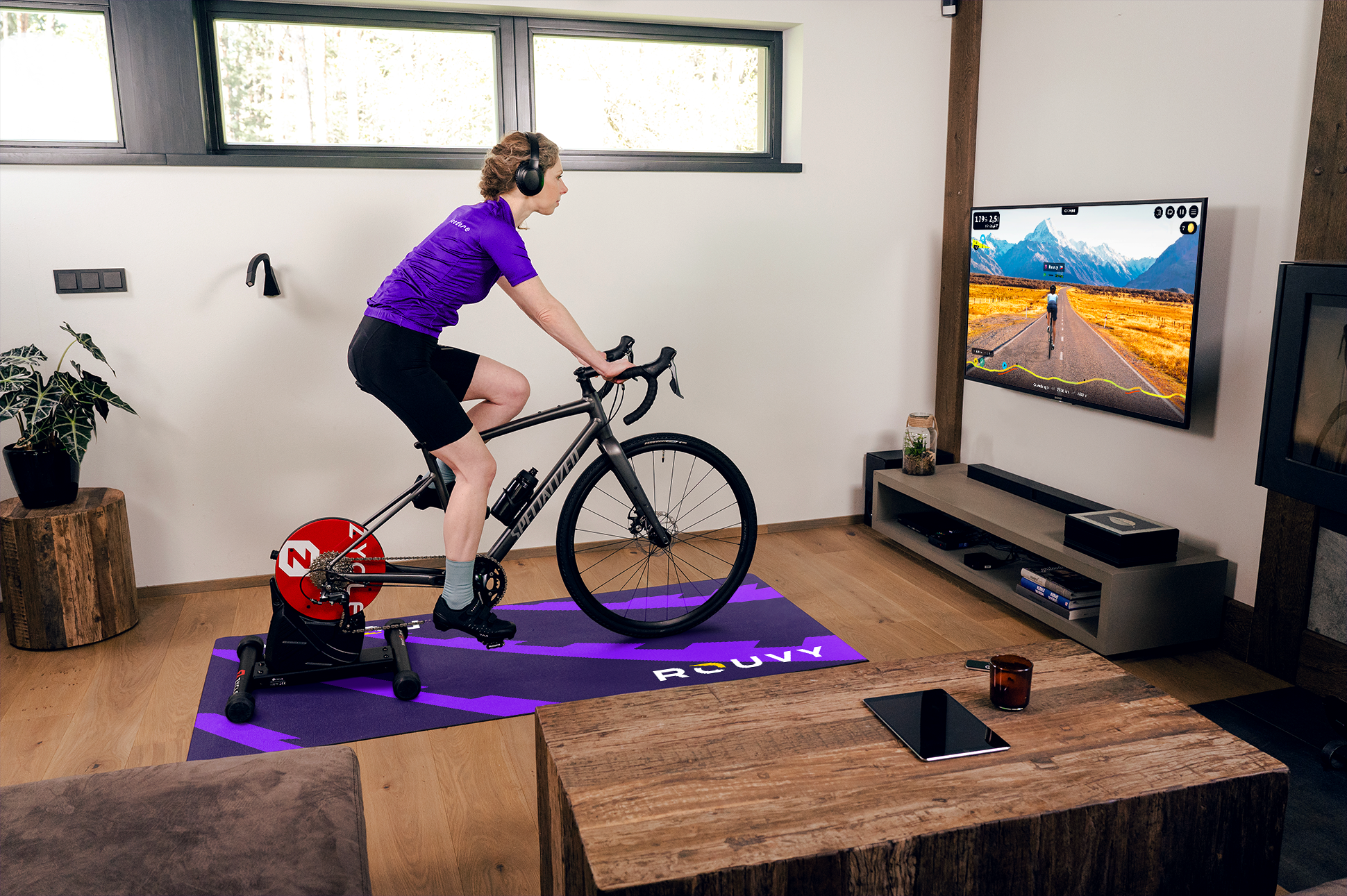
When it comes to precise interval sessions, be that VO2 max sessions or more sedate tempo work, indoor riding will always be more reliable than the open road.
With so many distractions and hazards, whether that's junctions or rush hour traffic, it can often be hard to complete a clean session out on the road, especially here in the UK, where climbs tend to be no more than 10 minutes long. The lack of any micro-rests does make interval sessions more challenging, but it allows you to really control the stress you put on your body, which makes tracking your training easier.
On the flip side, real-world riding or racing never totally reflects the work you do on the indoor trainer, so a balance of both riding types is best. To avoid overtraining, I would tend to opt for no more than 2 or 3 interval sessions in a given week, mixed with some endurance miles in the light when you can on the open road.
Efficiency and admin
This is a big one for many of us, particularly in the middle of the week when time is tight. If your goals are firmly based around getting stronger on the bike, and every minute counts, you are generally going to get a higher quality training session on the turbo trainer if you only have up to 90 minutes to play with.
If you live somewhere suburban, then you're likely going to be dealing with traffic at the start and end of your ride, and that takes precious time out of your evenings. Outdoors isn’t automatically inefficient. You can design routes with fewer interruptions and aim for time in zone rather than chasing average speed. Still, for busy weekdays, the turbo is hard to beat. Save the longer aerobic volume for the weekend, when you can top up daylight and Vitamin D
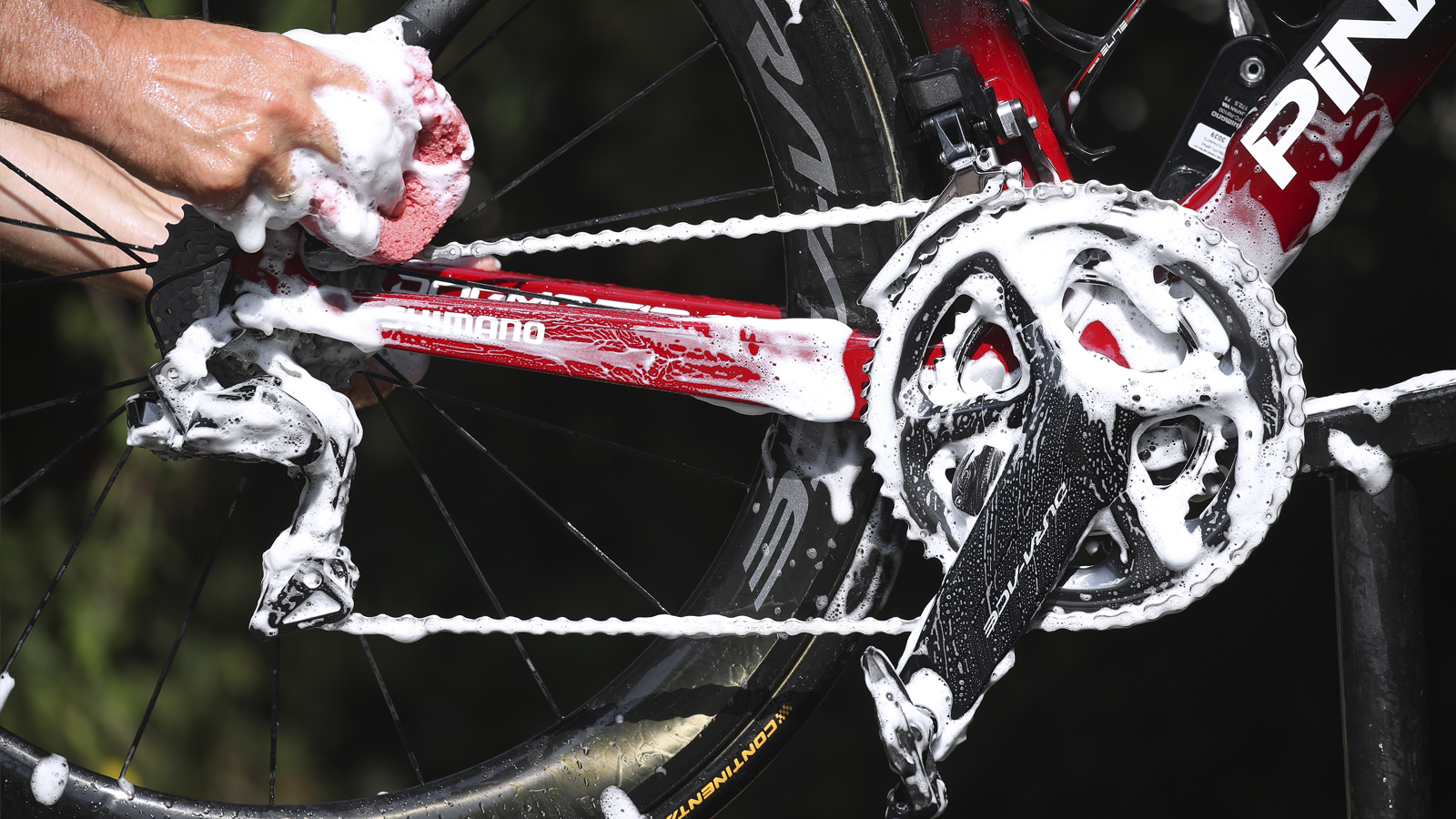
There's also the amount of washing that can come with winter riding. A dirty bike, coupled with a whole stash of cool weather riding kit, and having to charge up your cycling computer, lights and locate them means that outdoor riding in winter is far from a zero admin task.
Staying skilled
The part of cycling that indoor training will never quite be able to replicate is bike handling by the very nature of the fact that you are riding on a static bike.
Cornering, descending, group etiquette and reading the wind are all skills which you can only develop outside, and even if you are a seasoned rider, it's good to keep the toolbox in check through out the colder months.

There's also a lot to be said for dialling in your efforts. Complete a full winter only using ERG mode, for example, and you might find that all of a sudden, pacing the first time trial of the season on an undulating course might be rather more difficult than you imagined.
Anaerobic efforts still tend to be better in the outdoors. Standing starts or short sprints really need you to be out of the saddle, and have instant feedback from the pedals - something you can't always get from a smart trainer.
A balance is best
Indoors isn’t a replacement for outdoors, and outdoors isn’t a test you have to pass - they work together. If you have the time to ride a few times a week, you are probably best off using the trainer to control the dose and protect your schedule, and the road to clear your head and keep you sane.
When in doubt, ask two questions - what do I want from today, and what will help me enjoy it enough to ride again tomorrow? Answer those honestly and you’ll choose well.
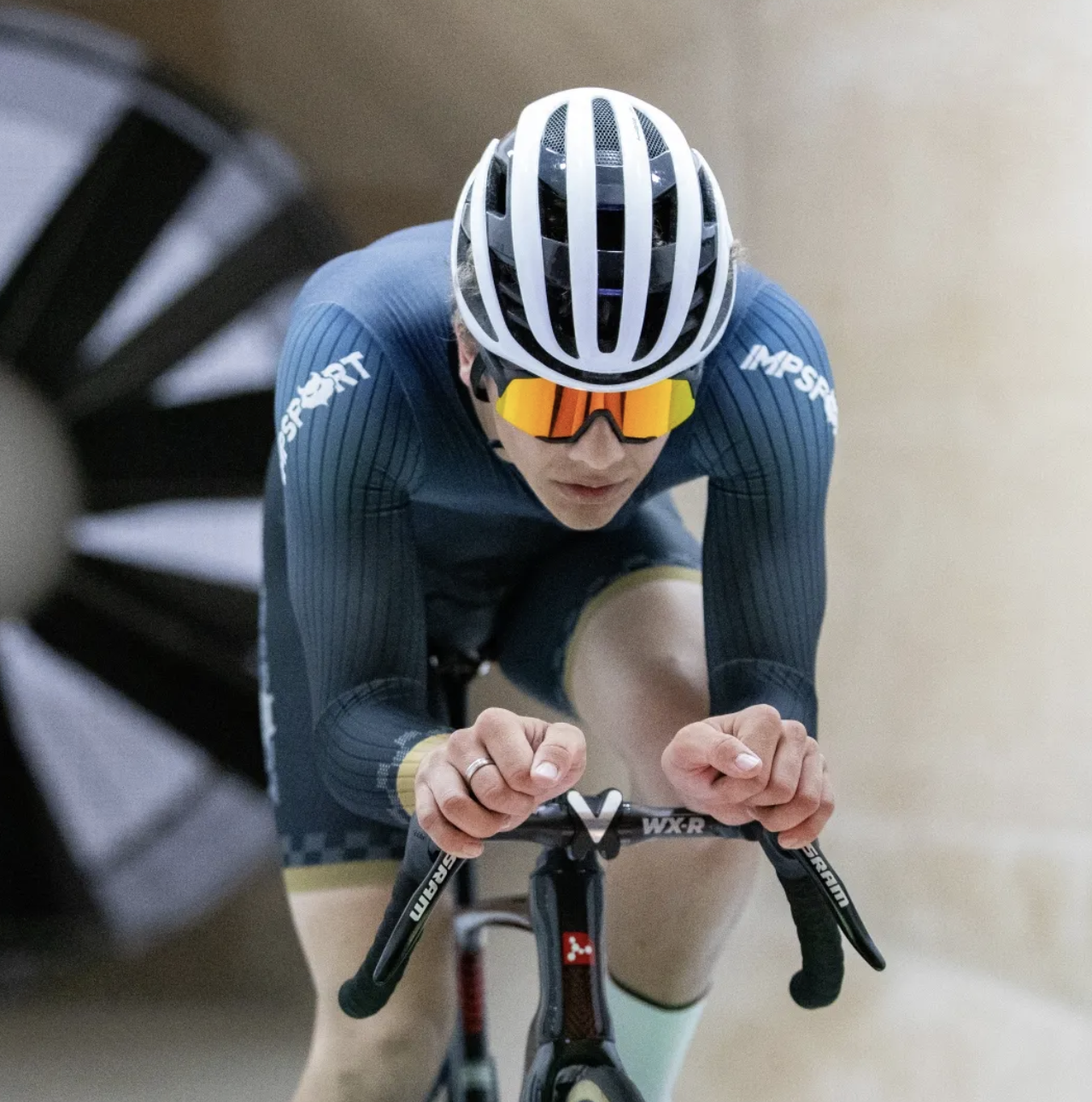
Joe is a former racer, having plied his trade in Italy, Spain and Belgium, before joining Cycling Weekly as a freelancer and latterly as a full time Tech Writer. He's fully clued up on race-ready kit, and is obsessive enough about bike setups to create his own machine upon which he won the Junior National Hill Climb title in 2018.
You must confirm your public display name before commenting
Please logout and then login again, you will then be prompted to enter your display name.
